OPPORTUNITY KNOCKING




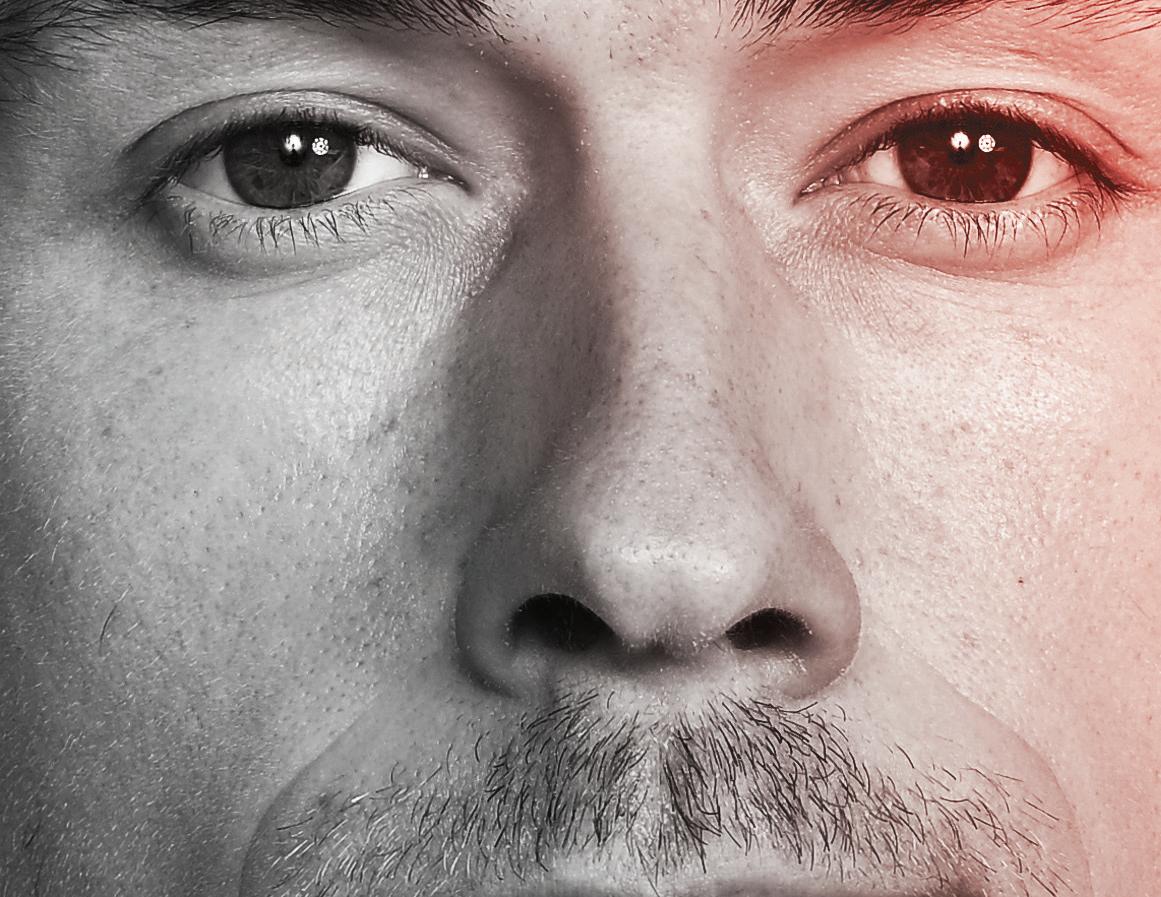
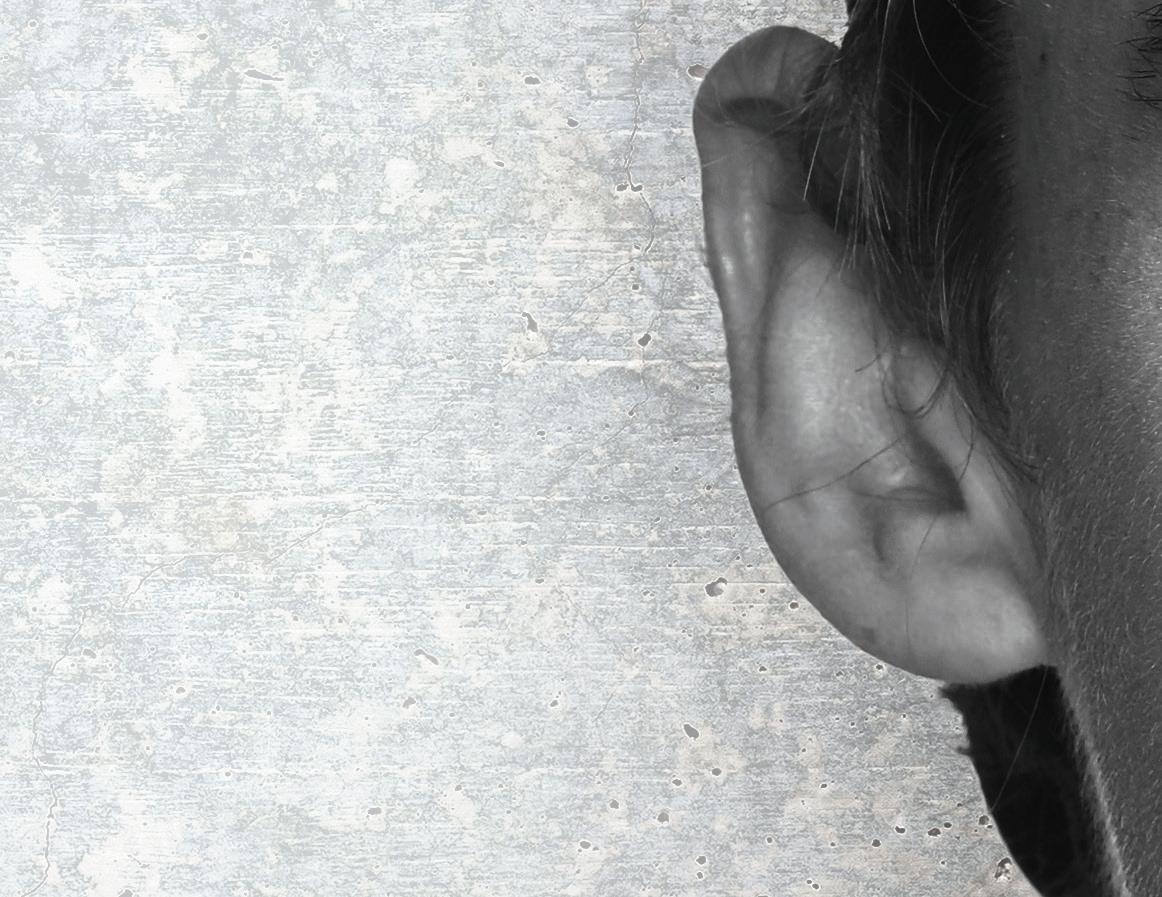
PLAYERS TO WATCH






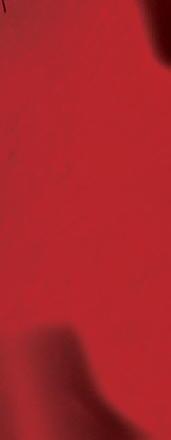
A NEW RIVALRY


RYBAKINA + SABALENKA




AUSSIE ARRIVALS
OLIVIA GADECKI
MAX PURCELL



ALEX DE MINAUR

PLUS DONNA VEKIC JIRI LEHECKA MARTA KOSTYUK
APR / MAY 2023
18 SEIZING OPPORTUNITY
With hard work and sheer commitment, resourceful players are capitalising on the many pathways to professional heights.

22 PASSION REIGNITED
After overcoming injury, a resurgent Donna Vekic has rediscovered top form and soared back into the world’s top 20.
25 CZECHING IN
Boasting explosive power and rare composure, Jiri Lehecka appears set to follow in the path of notable Czech stars.
14
DEMON DEVELOPMENT
Reinstated as Australia’s No.1 player, Alex de Minaur has a top-10 goal in sight.

EDITOR
Vivienne Christie
ASSOCIATE EDITOR


Leigh Rogers
DESIGN
Andrea Williamson
Trevor Bridger
FOUNDING EDITOR
Alan Trengove
PHOTOGRAPHS
Getty Images Tennis Australia

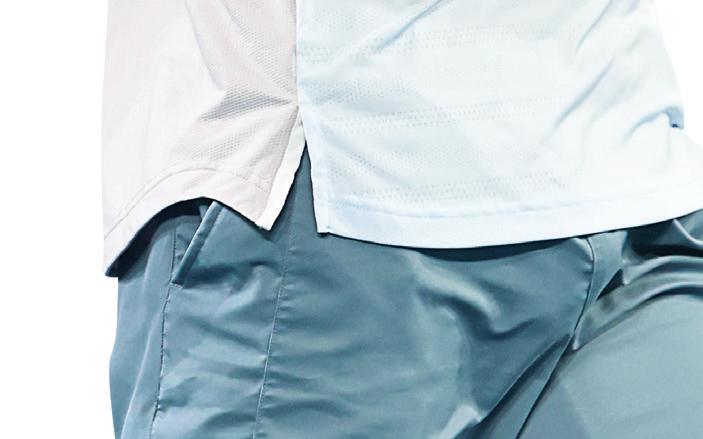
COVER PHOTO


Getty Images
Australian Tennis Magazine is published by TENNIS AUSTRALIA LTD, Private Bag 6060, Richmond, Vic 3121. Email: editor@tennismag.com.au


Distributed by Ovato
Printed in Australia by Ive
The views expressed in Australian Tennis Magazine are not necessarily those held by Tennis Australia. While the utmost care is taken in compiling the information contained in this publication, Tennis Australia is not responsible for any loss or injury occurring as a result of any omissions in either the editorial or advertising appearing herein.


FEATURES
APRIL / MAY 2023 VOL.48 NO.2
contents
28 UPWARD TRAJECTORY












After winning her first WTA singles title, the highly touted Marta Kostyuk has entered the world’s top 40.
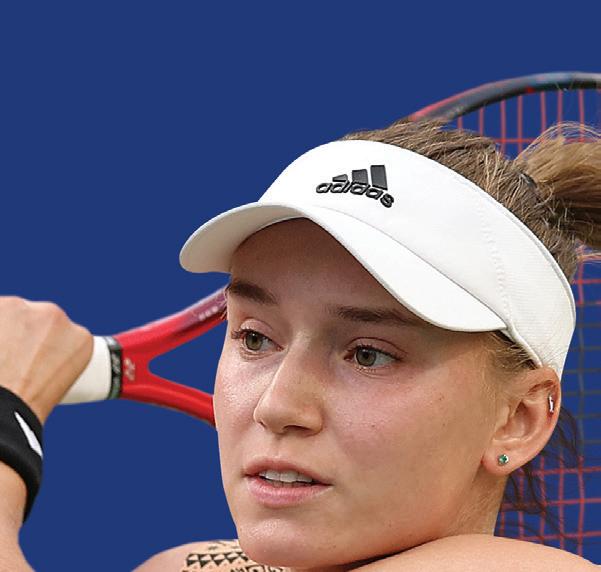

30 A CHINESE CHARGE
A trio of Chinese men are creating history with their record-breaking performances on the world stage.
42 THE PERFECT SHOT
Award-winning photographer John Anthony has captured many history-making milestones in tennis.
48 LIFE BEYOND COMPETING


A career change is inevitable for professional players, but there are many diff erent paths they can take.
64 SIBLING CONNECTION
Olivia and Thomas Gadecki are maximising their sibling connection as they build on their recent success.
50 RYBAKINA RISES
As the tactically astute Elena Rybakina charges up the rankings, exciting new rivalries are forming in the women’s game.

66 PERSISTENCE PAYS
A greater focus on singles this season is already reaping rewards for Australian Max Purcell.


6 FIRST SERVE 7 FAN ZONE 8 BREAKPOINTS 10 SPOTLIGHT 11 ONE TO WATCH 12 TOP TEN 33 COURTING CONVERSATIONS 55 YOUR GAME 68 SCOREBOARD 70 RANKINGS 72 KIDS’ CLUB 74 LAST WORD REGULARS COURTING LAST WORD
OPPORTUNITY Maximising





As some prominent chapters concluded, several players had seized some spectacular opportunities early in season 2023. With his record-equalling 22nd Grand Slam title secured at the Australian Open, Novak Djokovic subsequently spent a 380th week at world No.1. Having surpassed Steffi Graf’s previous-best 377 weeks in that position, it marked a new high on both the men’s and women’s tours.
In a fascinating period of crossgenerational dominance, the history-making Carlos Alcaraz – still just 19 – reascended to that coveted top spot a er li ing the trophy at Indian Wells. Iga Swiatek,
both fierce determination and a relentless work ethic –qualities that have also defined the rise of Alex de Minaur. The 24-yearold from Sydney has celebrated important milestones in 2023, with the seventh and biggest title of his career in Acapulco boosting his return to Australian No.1.
It’s a privileged position that De Minaur occupies with pride. “I’m happy to be in a position where maybe I can inspire some kids,” he told Australian Tennis Magazine of that achievement. “And to show that with a lot of hard work and sacrifice that you can accomplish some great things.”
That attitude has also paid off for other Australian players.
meanwhile, had added a 12th singles title in Doha to underline her command as the WTA’s world No.1. For many resourceful players, there had been earlier feats in identifying, and maximising, the opportunities that would help launch their professional tennis careers. Some, like Tunisia’s Ons Jabeur, had to pave their own path; others including Victoria Azarenka and Casper Ruud, progressed with inspiration and support from a sponsor or a role model.


Players who had climbed to professional heights from the most unlikely circumstances set a stunning example for subsequent generations. “If you are truly passionate about something, I think anything can happen,” said Frances Tiafoe of his selfdescribed “Cinderella story”, which began with the goal for tennis to provide a gateway to an otherwise una ordable education.


Each of those resourceful athletes had demonstrated
While Max Purcell is a Grand Slam doubles champion, the determined Sydneysider prioritised singles this year. The dogged approach was richly rewarded when the 25-yearold claimed three consecutive ATP Challenger titles in February; from outside the top-200 before that period, Purcell subsequently peaked at world No.95. It ensured an impressive eight Australian men were ranked inside the elite top-100 group.



As we celebrate those stories of opportunity in a specially themed issue of Australian Tennis Magazine, we’re also considering those that could soon unfold. New Grand Slam champions, astonishing records and heart-warming comebacks are among the tantalising possibilities in the clay-court season. As top players maximise their many opportunities, they’re also setting a standard that enriches the sport.
Vivienne Christie editor@tennismag.com.au
“I’m happy to be in a position to show that with a lot of hard work and sacrifice, you can accomplish some great things.”
6 AUSTRALIAN TENNIS MAGAZINE
ALEX DE MINAUR
TENNIS COURT HIRE

















NO MEMBERSHIP, NO WORRIES



sked to explain the origins of his ‘Demon’ nickname, Alex de Minaur goodnaturedly relates the story of a junior coach, Ben Pyne, making a play on his surname and the on-court speed that –even then – was emerging as a trademark. “It kind of worked and I went with it ever since,” De Minaur smiled.
A decade or so later, the ‘Speed Demon’ reference is more relevant than ever, the Australian having combined his lightning-fast movement with














a never-say-die attitude that has tormented opponents – and thrilled supporters – for years. But any ‘demon’ attributes are tough to pinpoint in one of the game’s most committed competitors, whose role model qualities are evident in many aspects of the sport. They were most recently clear when De Minaur regained his status as Australia’s No.1 player – a position that provides him with unmistakable pride.


“It’s a great honour,” said the 24-year-old, who achieved the milestone by claiming his seventh, and biggest, singles















CHRISTIE reports




title at the Acapulco ATP 500 tournament in February, which boosted his return to world No.18.





“I’m happy to be in a position where maybe I can inspire some kids here and there (and to) show that with a lot of hard work and sacri ce, you can accomplish some great things in life.”
It takes only the briefest glance at De Minaur’s expansive record to appreciate how much those words ring true. The Sydneyborn athlete showed an intense dedication to tennis from the time he began lessons as a threeyear-old at Carss Park in the city’s south. One of his rst coaches,







Cindy Dock, fondly recalls how the dedicated young player was rarely spotted without a racquet.

“He just loved swinging his racquet around and hitting balls on all the walls at the tennis centre,” Dock told tennis.com.au in 2021. “The challenge at that age is to keep kids motivated, but Alex just loved it. Even then he’d chase down everything. You actually had to tell him to go home, otherwise he would have stayed on court all day.”
The passion soon translated to professional potential, with the teenage De Minaur peaking at world No.2 on the
FEATURE
Reinstated as Australia’s No.1 player, Alex de Minaur is showing both the form and the mindset to achieve his top-10 goal. VIVIENNE
14 AUSTRALIAN TENNIS MAGAZINE
























Ons































becomed the most successful Arabic player in history.





SEIZING OPPORTUNITY







“Seeing young kids, how I can inspire them ... it’s not a heavy weight, it’s an unbelievable privilege.”
FEATURE 18 AUSTRALIAN TENNIS MAGAZINE
ONS JABEUR
The foundations for the proli c careers of Venus and Serena Williams are woven into tennis folklore. Their father, Richard, had famously watched Virginia Ruzici claim the Roland Garros 1978 women’s title and pocket more than $20,000 in prize money. Identifying a chance for his future o spring to accumulate similar riches, the plan that Richard subsequently wrote for their potential tennis journey was said to span 85 pages.








The sisters became the ultimate example of professional players who created their own opportunities.
Starting on the public courts of Compton in Los Angeles, when they were coached by Richard and their mother Oracene, Venus and Serena bypassed more conventional development routes to become world No.1s and Grand Slam champions.
“Everyone does di erent things,” Serena once commented of the unorthodox pathway,





which took in time at a prestigious tennis academy in Florida, a return to their parents’ mentorships, and stellar junior careers that were abandoned so the sisters could focus on education. “I think for Venus and I, we just attempted a di erent road, and it worked for us.”


The sisters’ journey shows there can be many entry points to the game’s upper echelons; for the most resourceful and determined athletes, maximising opportunities starts with identifying them. Here are the ways that some of today’s stars have climbed to professional glory …

THE TRAILBLAZER PATH
When Ons Jabeur voiced her Grand Slam-winning ambitions as a six-year-old in Tunisia, many people simply laughed. While her mother, Samira, was a passionate recreational player, the tennis club in Jabeur’s hometown of Sousse didn’t even have its own courts. A younger Ons instead trained at nearby hotels.


But fuelled by the support of her mother, who tirelessly drove her to tournaments throughout the northern African nation,
Jabeur moved to the capital, Tunis, at age 12 to train at a national sports high school.
“It was a big decision, it was very hard, but I had to take it, I had to go practise more and more,”


Jabeur told GQ Magazine in 2020.
“(I) stayed with girls I don’t even know from di erent sports at this sports academy.”
The determined teenager also spent time training in France and Belgium and when she claimed the Roland Garros 2011 girls’ singles title, it became the rst of many records for the increasingly popular Jabeur.
The 28-year-old has famously gone on to achieve a series of breakthroughs for Arabic players. She was the first to reach Grand Slam singles finals (Wimbledon and the US Open in 2022) and rise to world No.2 heights. While the ambitious Jabeur works hard to add to those achievements, she proudly recognises the role she can play in the tennis journey of other players. “I see how important I am for African tennis. And when I go to Arab countries I see Arabs how they react to me, and obviously Tunisia as well,” she commented at Wimbledon

last year. “Seeing young kids, how I can inspire them, for me it’s not a heavy weight, it’s an unbelievable privilege.”
FROM HUMBLE BEGINNINGS …


Frances Tiafoe doesn’t shy from the against-the-odds nature of his rise to professional tennis heights. A humble start in the sport – when his Sierra Leoneborn father, Frances Snr, was a custodian at a Maryland tennis centre where Frances and his twin brother Franklin regularly slept overnight in a spare o ce – was initially part of a more conservative plan to gain an otherwise una ordable education.
“Once we got in the game of tennis, my dad was like, ‘it would be awesome if you guys can use this as a full scholarship to school’,” Tiafoe explained in New York last year. “I mean, we couldn’t afford a university. So (he urged us to) use the game of tennis.”
The world No.14 American has of course gone on to achieve much more than that, peaking with a career-best Grand Slam campaign at the 2022 US Open,
SEIZING OPPORTUNITY
With hard work and sheer commitment, resourceful players are capitalising on the many pathways to professional success. JEREMY STYLES reports
AUSTRALIAN TENNIS MAGAZINE 19
RYBAKINA












 SIMON REA
SIMON REA
FEATURE 50 AUSTRALIAN TENNIS MAGAZINE
“Rybakina was rock-solid emotionally and tactically throughout the contest.”
RYBAKINARISES

Elena Rybakina may have been bitterly disappointed to lose a thrilling Australian Open 2023 final to Aryna Sabalenka. But she was far from discouraged by the loss.
Less than two months later, she scored the second biggest title of her blossoming career at Indian Wells by ipping that result, in what was another compelling battle against Sabalenka.

In a nal during which both made the slow, gritty hard court appear signi cantly faster as they exchanged powerful strikes, Rybakina saved two set points before completing a 7-6(11) 6-4 triumph.
It was a victory aided by lessons learned from her loss at Melbourne Park in January.
“On the second serve, I just tried to push more, because I remember since Australia she was putting a lot of pressure on the second serve. So, this is something for me to improve also,” Rybakina said.
“I think here, since the conditions (are) a bit slower, it was kind of easier to play the next shot.
“It was di erent, especially this rst set, because she did (a) couple of double faults, which



gave me an advantage … in Australia she served really well. The second serve was, I think, same speed as the rst one. So, kind of really aggressive.”
The win boosted Rybakina to a career-high ranking of world No.7 and into second position in the WTA Race to the Finals, behind rst-placed Sabalenka.
A NEW RIVALRY
The Indian Wells final pitted the reigning Wimbledon champion (Rybakina) against the reigning Australian Open champion (Sabalenka), and everybody was tuning in.




“These two have picked up where they le o in Melbourne,” tweeted WTA legend Pam Shriver during the rst set. “Rivalries are truly born only when players play big-time nals in (the) same calendar year.”
Indeed, the two biggest women’s singles finals in 2023 – Australian Open and Indian Wells – featured the same two players, for just the third time ever and rst since 2012.
It marked the rst time – dating back to the rst Indian Wells
women’s tournament in 1989 –in which the Australian Open runner-up avenged their defeat in the Californian desert.
Although Sabalenka owned a 4-0 record over Rybakina entering this Indian Wells nal, all four wins had come in dramatic three-set matches.
Rybakina knew she was close, and Simon Rea of Tennis Australia’s Game Insight Group discussed how she was able to tilt the match-up in her favour in the Californian desert.

“Sabalenka coughed up 17 double faults in that Australian Open nal, and we’re all kind of surprised to think back at that number being so high. But 10 in the rst set of this Indian Wells nal is a bit of a di erent ball game,” Rea said on the The AO Show podcast.
“And it was certainly a di erent ball game in terms of how she handled that emotionally. And you saw, I think, quite a rocked Aryna Sabalenka come out early stages of set two, unable perhaps to park that emotional baggage.
“How much of that is due to the Rybakina game, with no






INDIAN WELLS FINALS AS AUSTRALIAN OPEN FINAL REMATCHES
YEAR INDIAN WELLS FINAL AO CHAMPION
2000 Lindsay Davenport d Martina Hingis Davenport
2012 Victoria Azarenka d Maria Sharapova Azarenka
2023 Elena Rybakina d Aryna Sabalenka Sabalenka
As the tactically astute Elena Rybakina charges up the rankings, exciting new rivalries are forming in the women’s game. MATT TROLLOPE reports
AUSTRALIAN TENNIS MAGAZINE 51
LEARN TENNIS FOR LIFE

























YOURGAME

GAME




Boost your on-court performance

56 TECHNICAL FOCUS
Does a player’s height really make a diff erence when serving? We explore the science behind a big serve.
59 PRACTICE
Australia’s top-ranked doubles player Storm Hunter provides an insight into her practice routines.
60 STRATEGY
There is a rise in powerful baseline players enjoying doubles success, especially in the men’s game.
62 MINDSET
How do you prepare for a rematch with a difficult opponent? We share tips for facing a nemesis.
63 MATCH DAY
Australian player Jaimee Fourlis reveals her match-day routines and most important career lessons.
AUSTRALIAN TENNIS MAGAZINE 55
LOFTY AMBITIONS: Reigning Australian Open champion Aryna Sabalenka believes she can challenge for the world No.1 singles ranking this year.
PERSISTENCE PAYS FOR Purcell
A



DANIEL
IRVINE
reports
Max Purcell has recorded some impressive results in his young career.
The 25-year-old from Sydney is a three-time Grand Slam doubles finalist and won the Wimbledon gentlemen’s doubles title last year.

He nished 2022 as the youngest player inside the world’s top 50 in doubles, having peaked at No.25 during an outstanding season.
This doubles success has helped Purcell achieve several childhood dreams, including representing Australia in Davis Cup and at the Olympic Games.


Yet Purcell couldn’t shake the feeling that he wasn’t achieving his full potential, especially on the singles court.
“I feel like I’ve got a lot more to give in singles,” explained Purcell in January after successfully qualifying at the Australian Open.
“I’m trying to take a step away from doubles this year and trying to focus on my singles and see where the next three or four years can take me with that.”
Purcell had enjoyed some singles success on the ATP Tour, recording multiple top-20 wins during 2021. Yet prior to this year, he had not broken into the world’s top 150.
Starting 2023 ranked No.220, Purcell’s goal was “to try and get into the top 100 at some point”.
Remarkably, he achieved that breakthrough in early March.
This followed Purcell winning a trio of ATP Challenger titles in India, which saw his ranking skyrocket from world No.203 to world No.95 in the space of three weeks.
He became only the 14th player in history to claim three consecutive ATP Challenger titles – and the rst Australian to achieve the feat.
“I was just locked in,” Purcell re ected on his 15-match winning streak.
“I just wanted to win every single point when I stepped on the court.”
The determined Purcell maintained a steely focus o court too during that incredible run.
“I wanted to be off my phone as much as I could,” he told ATPTour.com.


“I wanted to make sure I was getting as much quiet time as I could and just make sure going into my matches that I didn’t bring anything else on the court. No extra emotions or anything like that.
“I just wanted to be as calm as I could and focus on my mission. That seemed to work out really well.”
This highlights Purcell’s growing maturity, as well as his willingness to make sacri ces to achieve his on-court goals.
He plans to schedule smarter in 2023, having learned from the experience of trying to juggle both singles and doubles in recent seasons.
AUSSIE WATCH
greater focus on singles this season is already reaping rewards for Australian Max Purcell.
66 AUSTRALIAN TENNIS MAGAZINE
“Last year I burned myself out,” Purcell admitted.
“I can’t play two separate schedules. I did seven-and-a-half months at a tournament every single week last year. I still feel like I’m getting over that mentally and physically.”
Yet there’s no sign of lingering on-court e ects, with Purcell winning 21 of his 24 opening singles matches this season.
He also claimed an ATP Challenger doubles title alongside fellow Australian Marc Polmans at Burnie in February.
Purcell’s growing con dence is evident in his cra y allcourt game, which he utilises e ectively to frustrate opponents.

“I like to serve and volley a lot, and use the net a lot, which you don’t see a lot of these days,” he said.


A slice forehand is proving another weapon in his charge up the rankings.
“I don’t see anyone hitting slice forehands like I do,” Purcell noted. “I don’t think there’s a single person, so I think that’s pretty unique.”
Purcell developed the shot as a junior competing on synthetic grass courts in New South Wales, but “was always told by coaches that it wasn’t e ective”.
“Last year I was coachless for
a while, so I was like ‘screw it’,” Purcell said.
“I don’t care what coaches think, I’m just going to start doing it. Been going with that and using it for a good change-up.”
His selection in Australia’s Davis Cup team has also increased Purcell’s self-belief.
“I’d do anything for Australia and the Davis Cup team,” Purcell proclaimed.

PROUD AUSSIE: Max Purcell was thrilled to make his Davis Cup debut during a careerbest 2022 season.

He lists his 2022 debut as one of his proudest moments to date and played a starring role in Australia’s progression to a first final in 19 years.
STRENGTH IN NUMBERS
Max Purcell’s singles breakthrough comes at a time when Australian men’s tennis is thriving.
There are eight Australian men currently ranked inside the world’s top 100. This includes Jason Kubler, who started the year at world No.107 and now sits at a careerhigh world No.70.
While Thanasi Kokkinakis, whose ranking dipped to world No.159 in January, has reclaimed his top-100 place after winning 15 of his opening 20 matches of the season.
This depth was evident at Indian Wells, where six Aussies advanced to the second round in the men’s singles competition. This was the most to reach this stage at the tournament, which is considered the tour’s biggest outside the four Grand Slams, since 1977.
There are also nine Aussie men ranked inside the world’s top 100
in doubles, led by Matt Ebden at a career-high world No.18.
With Purcell focusing on singles, Ebden has formed a new partnership with India’s Rohan Bopanna this season.



They enjoyed a title-winning run at Doha and were finalists at Rotterdam. They also claimed the Indian Wells title, which was 35-year-old Ebden’s first at ATP Masters 1000 level.
As Purcell reevaluates his ranking goals for this season, his gratitude is strong. He believed he could excel on the singles court and is certainly proving he can. “I’ve de nitely had some bad times, but also some really good times. You never know what is around the corner,” he said.
“I’m pretty pumped with where I’m at right now.”
MAX PURCELL FAST FACTS
BORN: 3 April 1998, Sydney, Australia
FAMILY: Craig (father), Sue (mother), Jordan (older sister) and Harry (twin brother)
STARTED PLAYING: Age three
CAREER HIGHLIGHTS: Australian representative at Olympic Games and Davis Cup, won Wimbledon 2022 gentlemen’s doubles title (with Aussie Matt Ebden), two-time Australian Open doubles finalist, winner of fi ve ATP Challenger singles titles

CURRENT SINGLES RANKING: No.99
CAREER-HIGH SINGLES RANKING: No.95 (March 2023)
CURRENT DOUBLES RANKING: No.60
CAREER-HIGH DOUBLES RANKING: No.25 (April 2022)
CAREER PRIZE MONEY: $1,924,104
DID YOU KNOW? Purcell lists grass as his preferred playing surface and Wimbledon as his favourite tournament.
At 2 April 2023
AUSTRALIAN TENNIS MAGAZINE 67


















































































































































































































 SIMON REA
SIMON REA



























































